




May was an exciting month for MSGA Staff as two of our interns, Cora Rosanova and Josh Austin, were able to attend the P.J. Boatwright Jr. Internship Summit at United States Golf Association (USGA) headquarters in Far Hills, New Jersey.
The USGA has honored one of the preeminent tournament administration and rules dignitaries – P.J. Boatwright Jr. – with an internship that all Allied Golf Associations (AGAs) participate in. The goal of the “Boatwright Internship” as it’s commonly refer-

enced is to introduce interns into the business of golf administration.
A dozen years ago, I had the good fortune to attend the Boatwright Summit as a member of the Minnesota Golf Association and except for a COVID-era virtual summit, interns have been able to get an immersive experience learning about all things USGA and golf administration. With talented, knowledgeable speakers sharing their wisdom, the summit provides not only educational opportunities, but networking opportunities across the AGA

community.
This year, we are fortunate to have three interns who will all be on board as of the first week in June with Jess Miller arriving from Kentucky.


The Boatwright Internship has been exceedingly successful in both introducing talented individuals to golf administration, but also continuing to see Boatwright Alumni working in golf in various capacities.
During the past two years, the MSGA has benefitted from two of our previous Boatwright Alumni transitioning to part-time staffing roles. Ty Sparing our Communications Coordinator continues to serve the state with his consistent contributions to our newsletter (be sure to enjoy the first of a three-part World War II series in this issue) as well as chipping in with other projects throughout the season. Katie Fagg recently graduated and is working at Canyon River Golf Club in Missoula in addition to helping as a graphic designer for the MSGA.
Statewide, there are numerous opportunities that crop up throughout the season in the golf industry. In this issue, you’ll learn about the contributions of Bridger Creek’s Mark Holiday as he was honored this spring as a Hall of Famer in the Rocky Mountain PGA Section. While most golfers might be familiar with golf professionals, there is a strong and talented group of superintendents and agronomy staff working at your local facility before sunrise most days. The GCSAA (Golf Course Superintendent Association of America) is continuing to provide opportunities for those who are wanting to continue their professional journeys in agronomy.
While the season is picking up to a fever
PRESIDENT................................. Mary Bryson
VICE PRESIDENT....................... Peter Benson
TREASURER..................................... Bill Dunn
PAST PRESIDENT........................... Carla Berg
WOMEN’S CHAIR...................... Teresa Brown
Russ Cravens, Bill Dunn, Ron Ramsbacher, Brett Bennyhoff, Teresa Brown, Rod Stirling, Mary Bryson, Sparkey McLean, Tracy Paine, Karen Rice, Joe Rossman, Peter Benson, Lisa Forsberg, Marcia Hafner, Carla Berg, Cheri Ellis
MSGA STAFF
Executive Director......................................... Nick Dietzen
Tournament Director...................................... Tim Bakker
Communcations Coordinator.......................... Ty Sparing
Operations Manager............................. Michael Williams
Membership Operations Director............... Emily Hulsey
Online Support................................................. Ian Hulsey
Graphic Design & Content Coordinator......... Katie Fagg
USGA Boatwright Intern............................... Josh Austin
USGA Boatwright Intern................................. Jess Miller
USGA Boatwright Intern.......................... Cora Rosanova
Nick Dietzen ............................. 1 (800) 628-3752, ext. 2
406GOLF STAFF
Editor in Chief............................................... Nick Dietzen
Consulting Editor........................................ David Bataller
Staff Writer........................................................ Ty Sparing
Graphic Designer............................................... Katie Fagg

Montana State Golf Association P.O. Box 4306 Helena, MT 59604
1 (800) 628-3752 www.msgagolf.org

pitch as we approach the summer, opportunities will be advertised as the MSGA is made aware by our member clubs. Throughout the offseason, numerous clubs discussed their needs for good help and willingness to teach those who may not be golf enthusiasts, but have an interest in working outside, with customers etc. If you have been curious about either a summer gig, a career change or parttime employment, chances are there is a course near you that could benefit from good help.
Just as the MSGA team has been growing in recent years, our partners are continuing to expand and respond to the demand increases on golf courses thanks to the momentum in the state for golf. Some courses offer ad-

ditional golf-related benefits for employees and if you love golf, being around the game provides a nice balance between purpose and passion.
Our team has already made a lot of trips around the state and looks forward to traversing the Treasure State this summer. If we’re at your club, stop by and say hello. If we miss you and you’re interested in working in golf – stop by your local club and schedule a conversation with local staff and see what opportunities might exist, you never know it might be just the fit you’ve been looking for.

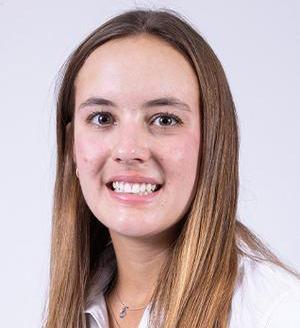

"Over 100 interns from different associations across the nation were present. After my time there, I have a much better understanding of the game of golf and the history behind it. The week consisted of educational sessions on championship administration, USGA rules, social media, GHIN and handicapping, as well as the USGA green section. Along with this, we were able to spend an evening at TopGolf and
"I had a lot of fun being able to travel to the Boatwright Summit in Far Hills, New Jersey.. Over the two and a half days of being at the USGA Headquarters, I was able to learn about many aspects of the USGA management.
During the trip, we learned about in-depth tournament operations, tournament management, and the upcoming additions to GHIN which I thought was interesting. This summit gave me the opportunity to make connections with other interns around the country. Learning about how they work in their associations, what is different and what is similar to our association. Being able to participate in challenges and work with other interns from all over was such a fun experience, collaborating and connecting." ~ Cora Rosanova

participate in a putting contest at the headquarters.
The museum tour was probably my favorite part of the week. I really enjoyed being immersed in the history of the game. It was cool to learn more about the pioneers of golf such as Ben Hogan, Arnold Palmer, and Tiger Woods. The rules session was very beneficial for me as well. For example, I learned the difference between a movable obstruction and a loose impediment, among many other interesting rules. Another fun event was the putting contest. If anything, it made me realize that my putting game needs some work, but it was still a great time.
We were fortunate to hear the USGA CEO Mike Whan speak about his experiences and how he came to his current role. Besides all the learning sessions, I found this week to be a great networking opportunity. I got to know a lot of other interns from across the country which was awesome. Overall, the summit was a fantastic experience. Now, I will be able to take all that I learned from the summit and apply it to my internship this summer, which I am really looking forward to." ~ Josh Austin




Mark Holiday, the long-time Director of Golf and co-owner of Bridger Creek Golf Course in Bozeman, Montana, will be inducted into the Rocky Mountain Section PGA Hall of Fame. Mr. Holiday has distinguished himself during his professional career as a PGA of America Member within the Rocky Mountain Section and was selected by virtue of his career achievements.
The co-owner of Bridger Creek Golf Course, which opened in 1994, Holiday has been a PGA Member since 1992 and has spent his career focused on teaching and player development.
Holiday's many recognizable accomplishments include being named the PGA of America’s National Player Development Award winner in 2012 and the Rocky Mountain Section Player Development Award winner in 2005, 2007, 2009, 2011, 2014, and 2017. In addition, he has been honored as the Golf Professional of the Year in the Rocky Mountain Section in 2013. Holiday has also earned awards for Merchandiser of the Year in 2003 and 2011, as well as the Bill Strausbaugh Award in 2005 and 2022.
for the Rocky Mountain Section Tournament Committee and the PGA of America’s Player Development Committee.
Holiday has promoted the game of golf relentlessly adhering to his philosophy of, “No matter how golf participation fluctuates nationally, strong local programs can keep golf flourishing in any region.” He has focused on four key areas to develop players including running corporate/community outings, hosting tournaments, running numerous leagues, and teaching group lessons to adults and juniors. Notably, year in and year out, the adult group sessions have over 100 participants and the junior lessons see more than 300 young golfers, peaking at 385.

Along with his activities at the golf course, Holiday is also involved with many organizations in his community including:
• Coach for Lions Club Basketball
• Leadership Bozeman
• Golf Committee Bozeman Chamber of Commerce

Holiday has served the PGA of America, the RMSPGA and the Yellowstone Chapter with devotion during his career. Most recently, he served as President of the Yellowstone Chapter in 2005 & 2006 and Vice President from 2003 to 2004. Over the course of his career, he has chaired the Awards Committee, Growth of the Game Committee, and the Scholarship Committee for the Rocky Mountain Section. Additionally, he has served as a committee member
• Bible Study Fellowship
• Golf Speaker to Rotary and Lions Clubs
• Engaged with the Montana State Golf Association for 30 years
• First Security Bank Junior Tour Board of Directors
The RMSPGA congratulates Mark for this crowning career recognition.
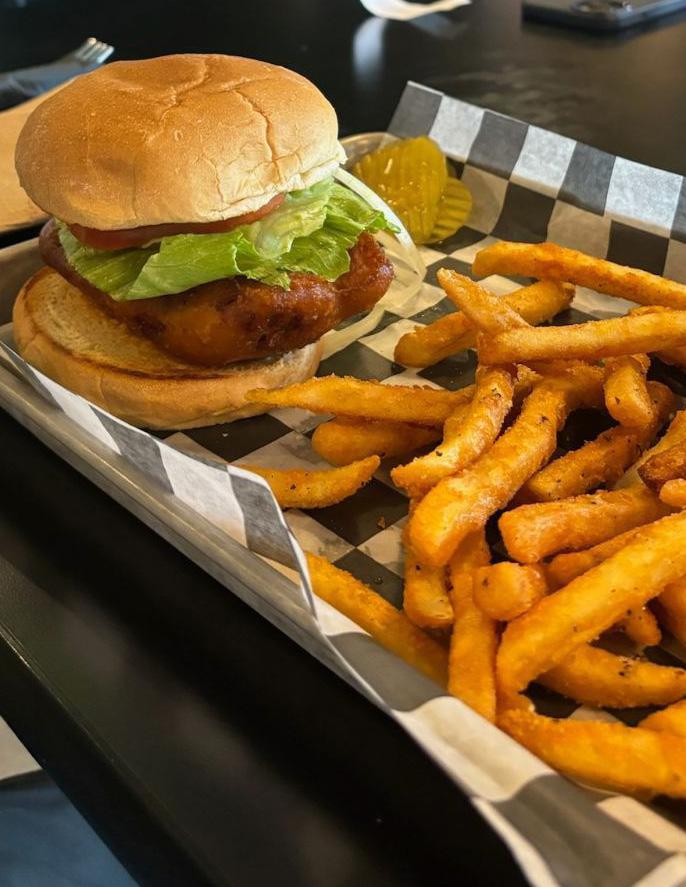
I recently had the Classic Turkey Club at the MISSOULA COUNTRY CLUB for an event. It has Daily’s bacon, turkey, butter lettuce, tomato, cheese and mayonnaise on sourdough bread. Delicious.

MSGA Operations Manager Mike Williams was at BILL ROBERTS GOLF COURSE in Helena for a Senior Tour event and he had the Crispy Chicken Sandwich on a toasted bun with lettuce, tomato, onion, and a pickle and a side of chipotle mayo. Yum!




In the 107-year history of the Montana State Amateur Golf Championships there’s only been one year that the event was canceled. That was in 1943 when the United States was in the midst of World War Two, a time when resources were scarce and many of the top players in the state had joined the armed forces.

Montana wasn’t alone of course in skipping the premier golfing event of the year, as many associations around the nation followed the USGA’s lead in foregoing major tournaments in support of the war effort. After the bombing of Pearl Harbor in December of 1941, the USGA’s Executive Committee drafted a resolution that effectively canceled its four major championships for 1942, as well as urging state associations to do likewise.
In place of the US Open that year, the USGA instead sponsored the Hale America Tournament, of which Ben Hogan was the victor. Golf historians still debate to this day whether or not that should’ve counted as another major on Hogan’s resume. If so, it would’ve been the fifth time he won the U.S. Open in his career. The USGA was adamant however that it not be deemed an official major tournament given the amount of talent that had gone overseas.
Despite the scaling back of major tournaments throughout the country, the USGA was nevertheless instructed by the U.S. Government to promote and expand golf wherever possible. In his book When War Played Through: Golf During WW2, the historian John Strege recounts how the government deemed golf an important activity in keeping a nation at war physically fit. Strege identifies John Kelly as a key figure in helping keep the sport going throughout the tumultuous early 1940s. He was the “assistant U.S. director of civilian defense in charge of physical fitness.”
Kelly, (whose daughter Grace would grow up to become a famous actress) had a mission to “convince the citizenry that its physical fitness was imperative to the war effort. Even
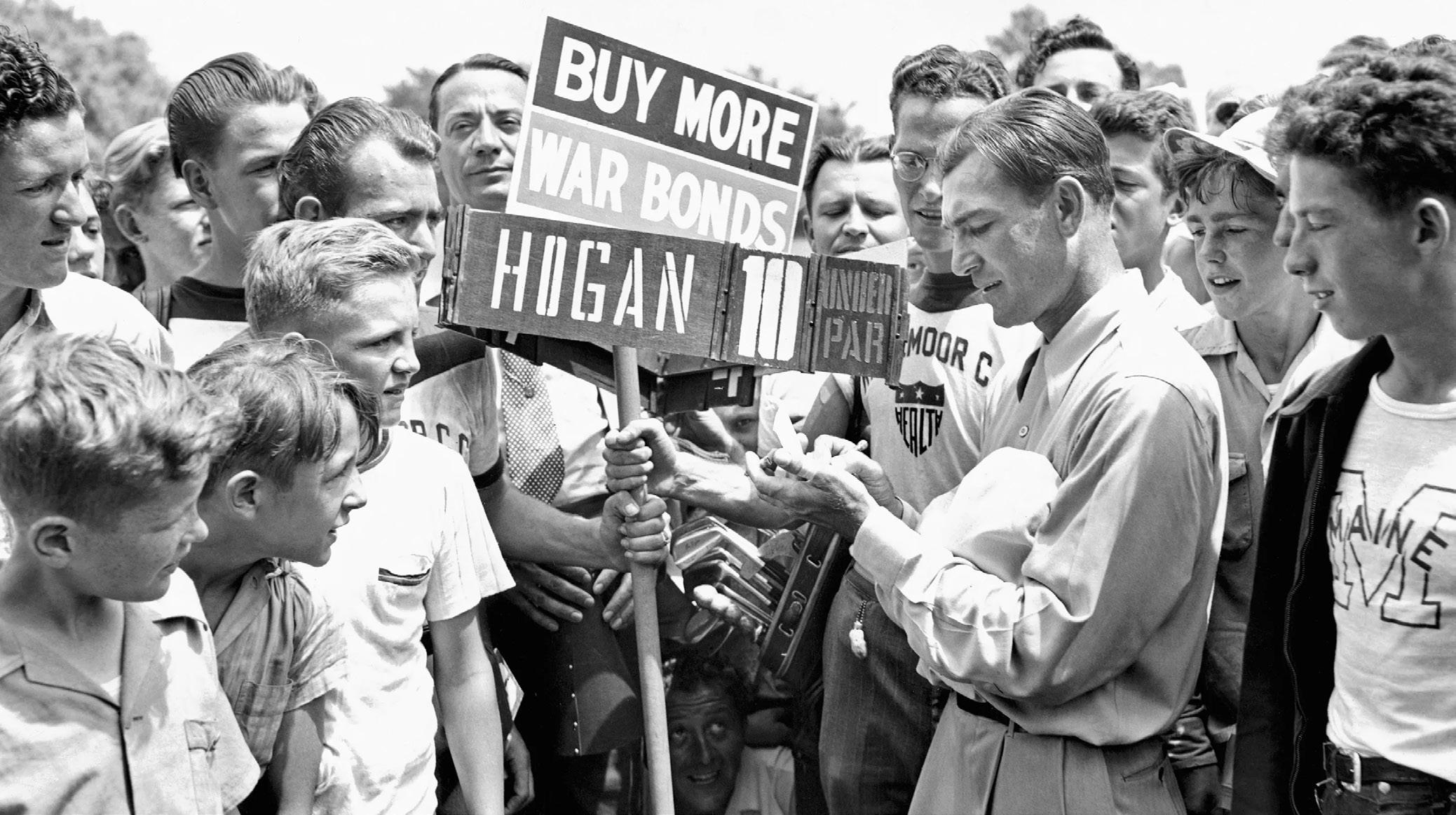
those who weren’t directly involved in the war were certain to be indirectly involved, perhaps in war-related industries that were likely to find themselves short of manpower, requiring the available bodies to work overtime.”
Not only was physical fitness through golf encouraged, but also fundraising. For example, in 1942 the Montana State Amateur winners Russ Swonson and Lue Jeanne Gronley split $175 in war bonds as the prize for winning their respective titles. Bonds and stamps were popular during this period, as well as Red Cross boxes that were found at the first tee of many courses throughout the country where players were encouraged to donate a “dime-a-round.” Gronley even represented the Butte Country Club for a broader fundraising campaign in Butte to provide athletic equipment for “Uncle Sam’s fighting men” stationed at the various training camps in the U.S. and military bases abroad.
While Montana tournament golf continued more-or-less as usual in 1942, by 1943 the MSGA canceled the State Amateur Champi-

onships for the first and only time in its history. Even the President of the USGA, George Blossom, made a grim statement earlier that year that the sport would face a trying period in the days ahead. “The adverse factors are many,” Blossom wrote, “restrictions on gasoline and transportation in general…loss of members to the armed services; shortage and turnover of labor; lack of rubber, certain metals and certain materials used in playing equipment and courses maintenance.” Yet despite all these setbacks, golf had to continue for the sake of the United States. As Blossom put it, “If it is patriotic to be in shape physically, mentally and spiritually, then it is patriotic to play golf.”
And so golf continued, albeit with less championships and different motivations. There were a variety of new issues golfers had to overcome in these war years. One in particular was the nationwide tendency for people to hoard golf balls. Among a host of other resources the Office of Price Administration called for a rationing of rubber products in late 1941, and soon enough due to heavy

demand sporting good stores had to limit the amount each customer could purchase. Golfers often played one ball until it fell apart, and became more determined than ever to hit the ball straight to avoid the hassle of procuring another one.
Despite all the wartime hubbub swirling in the background in 1943 some competitive golf was still played in Montana. Popular longstanding tournaments like the 4th of July tournament in Whitefish, the Oilfield tournament in Shelby, and the Labor Day tourna-

ment in Kalispell all held their events with the usual amount of enthusiasm. War stamps and war bonds were handed out as prizes.
Then there was the absence of the Montana State Amateur. There was still demand for some sort of statewide invitational tournament and finally in July of that year a solution was found. Fortunately for the treasure state tournament-goers, Montana’s flagship course in Butte stepped up with a replacement tworound event. As one writer for the Billings Gazette bluntly put it “The Montana State Golf Association has abandoned its state tournament for this year, but the Butte Country Club will see to it that the state has a titleholder for 1943.” In this case it was expected that the titleholder would be “hailed as the war year champion,” much in the same way Ben Hogan was the Hale America Tournament champ. Not quite a major, but a unique accomplishment nonetheless.
A handful of Montana’s best golfers showed up. Russ Swonson who won the State Amateur in 1942 and had recently been crowned champion of the Butte Country Club was there. Multiple time State Amateur winner Gene Jones was there. Tom Mulholland and Dave Fitzgerald, runners-up in 1941 and 1945 were also in attendance, along with the 1943 4th of July tournament winner Eddie Chinske. On the women’s side Jean Thompson was runner up in 1941 and came in as one of the favorites. 13-year-old golf prodigy Edean Anderson was another favorite to win it all after a summer of top three finishes at most of the big tournaments. Notably absent on the women’s side was three-time state amateur runner-up Marie Ross who had been winning most of the big tournaments that summer—she was busy playing in a ladies invitational golf tournament being held in Kalispell around the same time.
In the end Gene Jones beat out Roy Owen on the men’s side for the victory. Jean Thompson won on the women’s side, narrowly beating out young Edean Anderson by just a stroke. It was one of the last times Anderson would

lose an event in the state of Montana.
Jones and Thompson, the only War Year Champions the state of Montana has ever recognized. Deserving golfers who quite easily could’ve won the State Amateur if it were actually held in 1943. The implications of this year not counting on the official stat sheet is interesting we might say. For Jean Thompson, sadly despite being in contention multiple times, she never did win an actual State Amateur title. For Gene Jones who did win the State Amateur six times in his career, he remains in a tie with Ed Zemljack and Gene Cook for second most amateur wins of all time, behind EJ Barker’s nine victories. Good company to be sure, yet we might wonder if Jones might’ve snagged that seventh trophy if the State Amateur was never canceled. Such is life.
Most of the accounts of the Butte Country Club’s makeshift state invitational say it was a success. Many talented players showed up from around the state and competed well. There was even a “big dance in the clubhouse”

after the first day of play.
People were smiling yet there was a reality impossible to ignore. One can imagine a collective anxiety hovering over events like this, a common symptom of society at war. Even a writer for the Butte Daily Post mentioned “the genial atmosphere was almost the opposite of that generally found if championships are at stake in a links meet.” Along with the broader global tumult, the absence of many star players – and people’s friends – no doubt would’ve deflated the usual competitive atmosphere.
Past champions like Lue Jeanne Gronley, George Sarsfield, Guy Owens, Lloyd Skedd, Pauly Sechena and many others in the Montana golf scene were scattered across the globe supporting the Allied war effort. In the next issue we will see what these folks were up to.
P.S. In case anybody is searching for a Father’s Day gift, here’s a link to John Strege’s book When War Played Through: Golf During WW2


The 48th annual Don Barnett Memorial Tournament was at the Missoula Country Club recently. Held May 24-27, the always competitive Barnett Tournament is a 54-hole event that brings in some of the best golfers in the region.

It was déjà vu again as Salt Lake City’s Jack Holmgren won the men’s division for the third year in a row. With all three rounds under 70, he finished at -7 over the three rounds, managing to hold off Sean Ramsbacher by just one stroke.
Holmgren, originally from Minnesota, played collegiately at University of Iowa before transferring to the University of South Dakota where he graduated in 2018. Having heard about the Barnett Memorial through a Montana friend in 2022, Holmgren decided to give it a shot and make the trip to Missoula. It was a good choice as he’s now a three-peat champion of one of Montana’s oldest and most premier golfing tournaments.

Missoula native Sean Ramsbacher kept the pressure on with a third-round score of 63, finishing in the runner-up spot just one stroke back of Holmgren. He caught fire in the third round with six birdies and an eagle in the last 11 holes of play. Always tough on his home course, Ramsbacher is the reigning co-champ of the Montana State Four-Ball championship held at the Missoula Country Club last fall.
Laurel’s Morgan Corcoran was the title winner on the women’s side with a final
score of +21. The Missoula Country Club is a good course for the former All-Conference Rocky Mountain College golfer as it’s the same place she won the Montana State Women’s Amateur title in 2018. Corcoran’s first round of 73 gave her a six-stroke lead that she managed to add onto throughout the tournament. Second place went to multiple time Barnett winner, Son Fleck at +34.
In the seniors flight Missoula’s Steve Bell took home the championship hardware with a three-round score of +1. He had an eagle and eight birdies over the course of the 54-hole event, beating out Brad Grattan and Matt Sheridan who tied for second at +7.
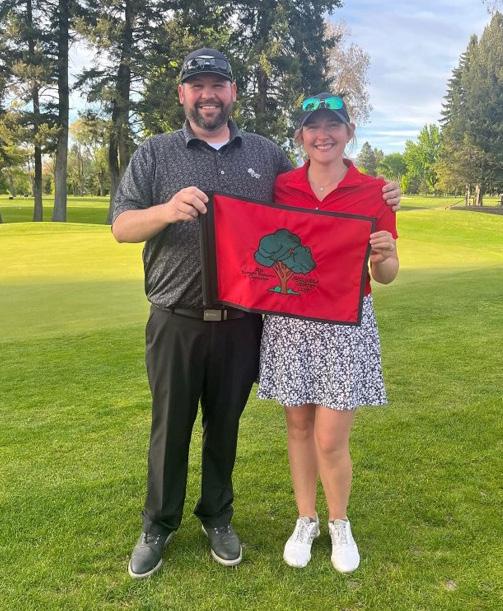
The Memorial Day golf tournament at the Missoula Country Club is one of the longest running golf events in the state, going back over 90 years, when Dr. Don Barnett himself was chairing the original invitationals. Barnett was known as “the father of golf” in Missoula, credited with designing much of the course at the Missoula Country Club, particularly the 16th hole which was the first grass green in the state. The name was later changed in 1977 to the Don Barnett Memorial Day Tournament shortly after Barnett died.
For full results, CLICK HERE




A lifetime ago, when I was a PGA club professional, I fell in love with an Air Force Nurse and followed her to Germany. I worked at an Air Force golf course with two British assistant professionals. The minute I arrived they looked at me and said, “you look like one of us.” I proudly said I was Welsh and Scottish. Big mistake.
For the next three years I heard every Welsh joke known to man. If only I had known that the great STABLEFORD scoring system was created by a Welshman! Who am I kidding, it wouldn’t have helped a bit – they were ruthless. I loved it. Oh, and the nurse and I just celebrated 28 years together!
I have had the pleasure of working the MSGA Senior Tour events this spring. The

weather has been the pits, but the golf has been stellar! The Stableford scoring system makes the competition so fun to follow. We have the live scoring on Golf Genius, and we watch as in each division it comes down to the last few holes to determine the winner. At the conclusion of each event, you hear, “How many points did you get?” The pace of play is great! Pick it up! No points on this hole? Who cares! On to the next hole.
And on to Spanish Peaks in September for the tour finale! We are very fortunate to have been welcomed by Spanish Peaks to host our tour ending event this year.
To all MSGA members 60 years and older, come and see how wise Stableford was years ago when he invented such a great twist on competitive golf.
Highest score wins! Now that sounds fun.
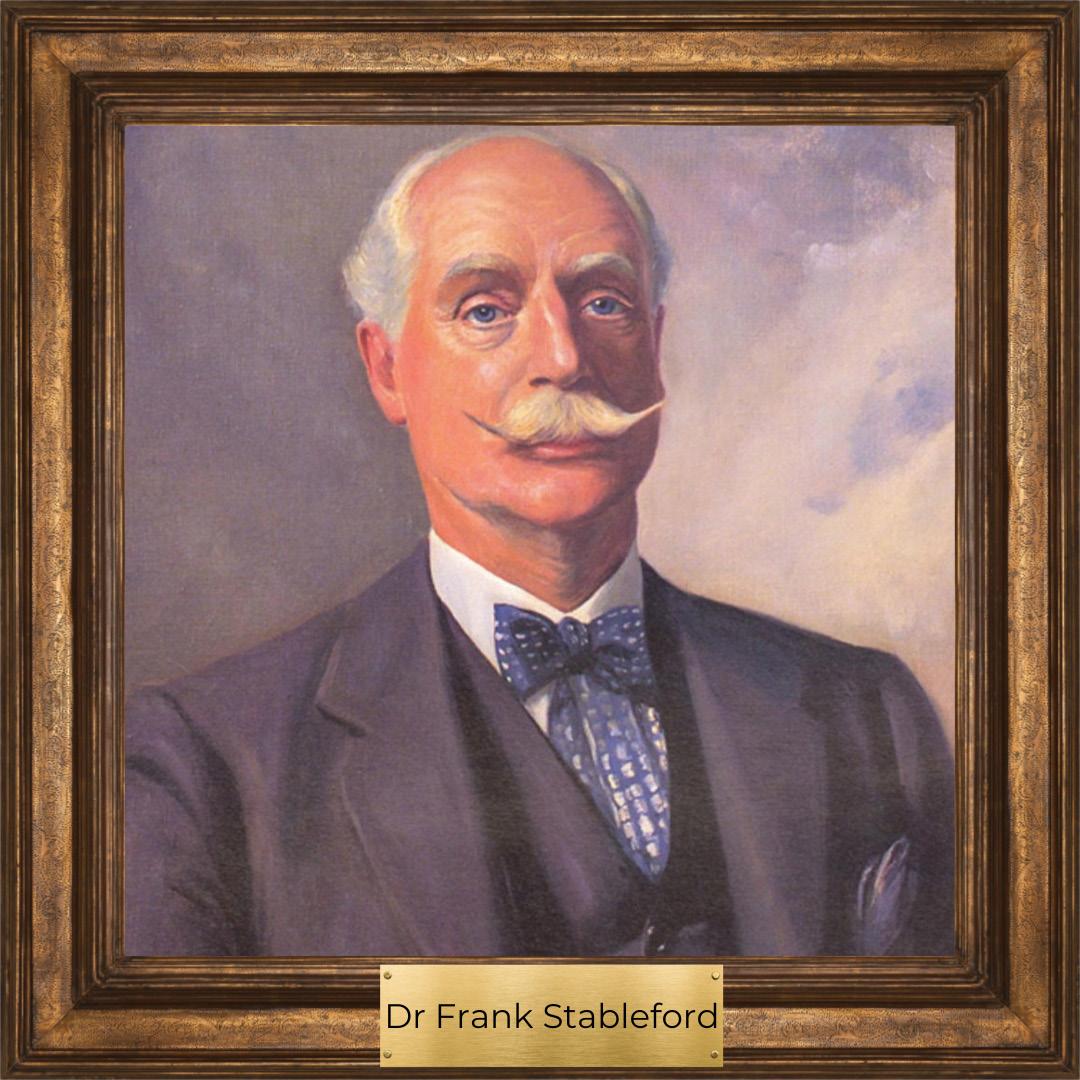

The Idaho Golf Association and WA Golf’s Ladies Golf & Wine Getaway is a member benefit for IGA, WA Golf and OGA members and is restricted to players who hold a handicap in one of the above associations.
Each registrant will be added to a pending list and will be manually moved to a confirmed list. There are 14 king bed rooms and 14 double bed rooms available on a first-come, first-served basis.
REGISTRATION FEES:
• One Golfer (Alone or with one other Non-Golfer) = $900
• Two Golfers sharing a Room = $715/player (total due at registration = $1,430)
WHATS INCLUDED?
• Two nights lodging at Marcus Whitman (Check-in Thursday, August 8th, 2024; Check-out Saturday, August 10th, 2024)
• Two rounds of golf at Wine Valley (Thursday & Saturday)
• Resort Fees
• Tee prize
• Competition fees for both rounds of golf
• Closest to the Pin Prizes & Long Drive for Thursday and Saturday
• Transportation to and from wineries on Friday
• Wine tasting fees at Dunham Cellars, Woodward Canyon & L’Ecole 41 Winery
• Boxed lunch on Friday
SCHEDULE OF EVENTS:
Thursday, August 8th
Round 1 @ Wine Valley Golf Course - 2:30 pm shotgun
Check-in at The Marcus Whitman Hotel after round 1

Friday, August 9th
Charter bus pick up at hotel for wine tasting – 10:30 am
First stop: Dunham Cellars + box lunch (provided) 11:00 am -1:30 pm
Second stop: Woodward Canyon & L’Ecole 41 Winery (half of the group will go to one winery and the other half will go to the other winery. Then we will switch after an hour.) 2:00 pm – 4:00 pm
Saturday, August 10th
Check-out of hotel room at Marcus Whitman Hotel
Round 2 @ Wine Valley Golf Course –Tee times start at 11 am (10-minute intervals)
EXTRA NIGHTS STAY:
Should be booked directly with the hotel.
REGISTRATION DEADLINE:
Tuesday, July 15th - 3:00 p.m. MST
CONTACT INFORMATION:
Lexie VanAntwerp: Manager of Member Services(208) 342-4442 - lexie@idahoga.org




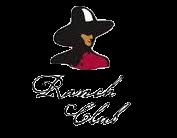
The Women’s State Amateur Championships return to Butte CC July 28-30. The 3-day event will crown champions in our Amateur, Mid-Amateur, Senior and Super Senior. Our annual banquet will be held at The Copper King Convention Center, a discounted lodging rate has been secured for participants at The Copper King. The rate is only reserved until June 28. Links to this rate can be found in your Women’s State Amateur registration confirmation email. Visit the MSGA Women’s State Amateur Registration page.

Limited Spots remain in the 2024 Men’s Amateur Championship! We currently have 20 openings in the Amateur Championship, 11 openings in the Senior Championship, and 10 openings in the Super Senior Championship. Field sizes for these championships will be held until July 1st. Players from waitlists will be entered into the field until 160 players from all championships are reached.
The Mid-Am Championship is over 50% full for our visit to The Ranch Club in Missoula this August. Players over the age of 25, with a Handicap Index under 10.0 are encouraged to register and test their skills on this links style golf course in the rolling hills outside of Missoula. The Ranch Club hosted the State Senior Tournament last year, this will be their first Mid Am Championship. We are sure it will be a great event. Register now.

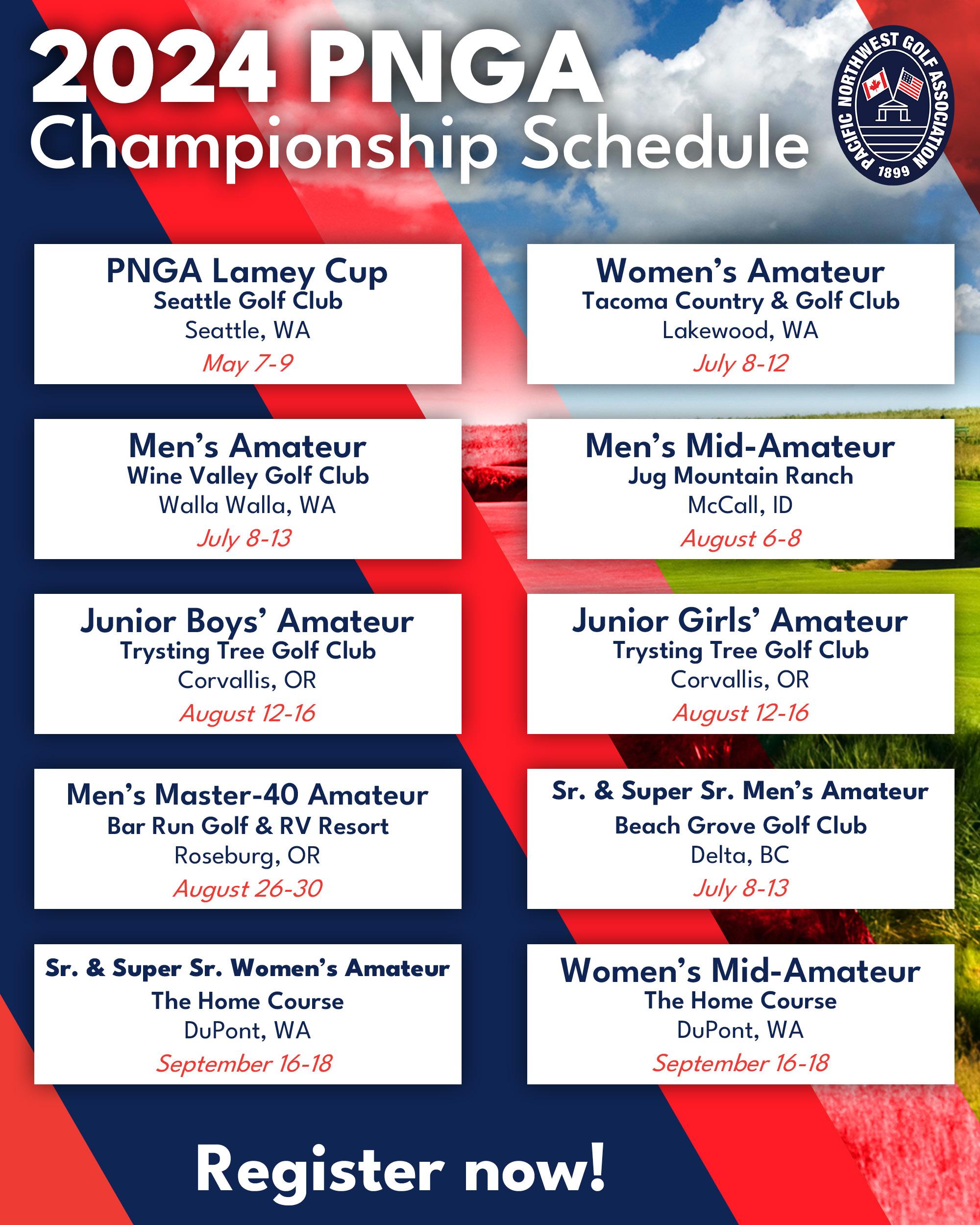


In a four-ball match play, two common phrases used by golfers are “that’s good” and “you’re on your own.” By understanding those phrases from a Rules of Handicapping™ and score-posting perspective, you’ll have no issues keeping an accurate Handicap Index®, no matter how often you tee it up in this popular format!
Before we get into how to handle those two scenarios, it’s important to call out the defined term within the Rules of Handicapping that helps match-play scores remain acceptable for handicaps: The term? Most likely score.
The definition of most likely score is implied with the term: It’s the number of strokes taken (including penalty strokes), plus the number of strokes you would most likely require to complete the hole from wherever you pick up.
So, if you lag your 20-foot birdie putt to tap-in distance and your opponent says, “That’s good,” you can pick up and record a par for handicap purposes – since you would most likely make that putt.
With that said, the use of most likely score can extend beyond the “gimme” range. So, if your partner chips in for birdie and you have 12 feet left for par, since you can’t improve the team’s score for the hole, you can pick up and
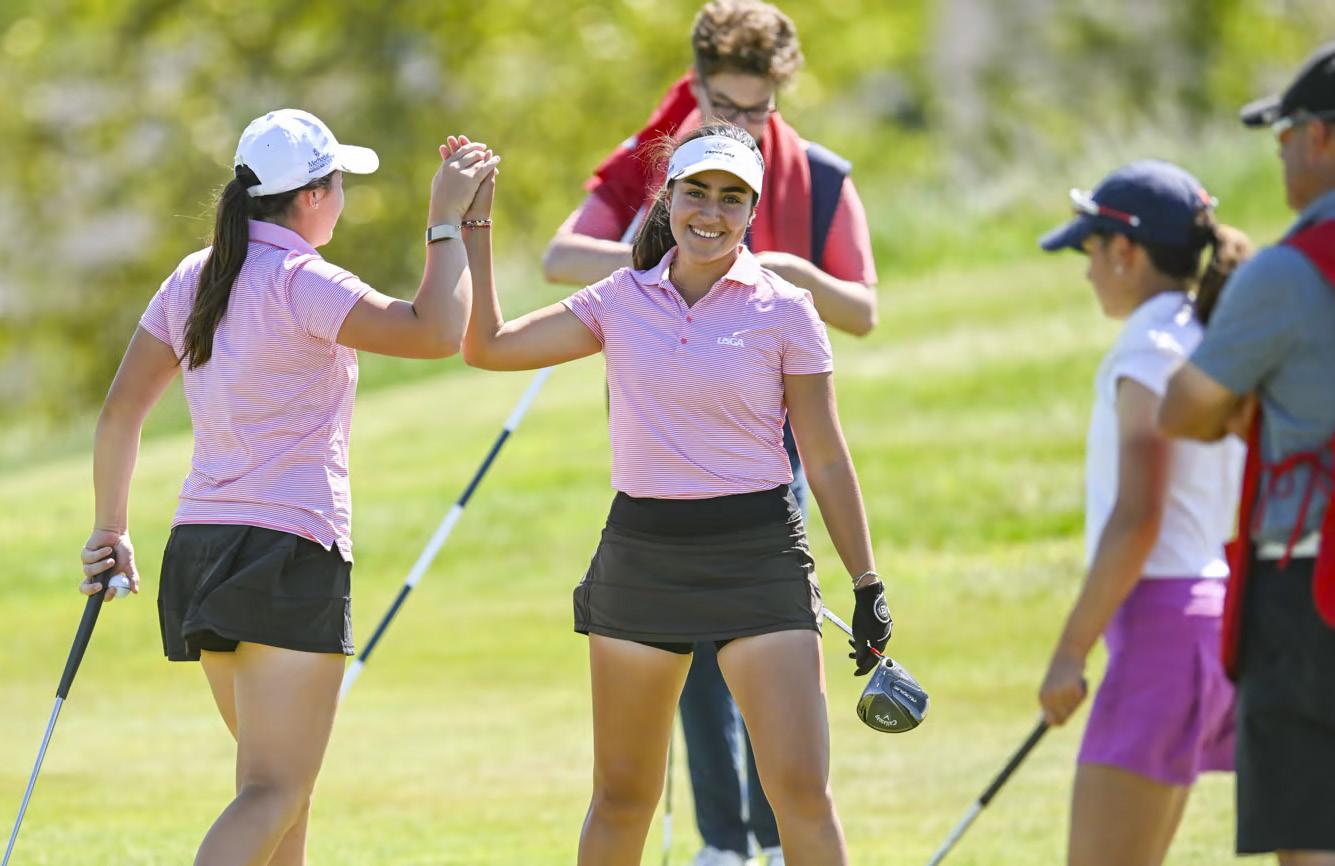

use your most likely score from there as well. This time, your most likely score would be a bogey since you would most likely take two putts from that distance to hole out.
Now, let’s move on to the “You’re on your own” scenario… which translates to “I am playing the hole so poorly that I’m picking up and relying on my partner’s score for the hole.”
But can most likely score be used from off the green as well?
The answer is yes – and there are guidelines within the Rules of Handicapping to help determine your most likely score in those scenarios. However, keep in mind that your most likely score cannot exceed your net double bogey limit – and if you’re having a very rough hole, it’s likely that net double bogey may come into play.
Remember – even if your score doesn’t count for your team, you still have an acceptable score for handicap purposes.

What if an 18-hole match ends before all holes are played?
If the match ends before the last hole, and you go on to play the remaining holes, you’ll simply record your actual scores for those holes.
However, if you return to the clubhouse without playing the remaining holes and the match lasted between 10-17 holes, your score must be posted hole-by-hole so that an 18-hole Score Differential™ can be determined for your round.
One final point – since at least 9 holes must be played for a score to be acceptable, if, in a 9-hole match, the match ends early and you return to the clubhouse without playing the remaining hole(s), that score would not be acceptable for handicap purposes.
For more information on adjusting hole scores, see Rule 3 of the Rules of Handicapping.
Sam Engel (left) and Brian Blanchard of Scottdale, Ariz., recently captured the US. Amateur Four-Ball at Phildelphia Cricket Club.Why is the sand in this bunker hard and the last one was soft?” My guess is just about every golfer has either uttered something like this or been in a group with someone who has. It is common for bunker sand to play differently from course to course and even from bunker to bunker on the same course. It can be confusing why this happens, especially since it all may look like the same white sand, but there are a number of factors that will always keep sand from playing exactly the same.
The impact that the environment has on a golf course cannot be overstated. While sun, wind and rain are most often mentioned in discussions about turf conditions, they also influence how bunker sand plays. For example,

a bunker exposed to full sun that gets plenty of air movement will dry out faster than a shaded bunker. Sand that is drier tends to play softer and moist sand plays firmer. Minor differences in orientation to the sun, tree shade or wind direction can lead to noticeable differences in how bunker sand plays from one location to another.
Not all sands are created equal. There are many sands on the market and comparing an expensive manufactured sand to a lower-cost natural sand is like comparing apples to elephants. A manufactured sand may pack together tightly even when dry and will usually drain better than natural sands. It is also likely to be more consistent across a golf course. This does not mean that there is anything wrong with lower-cost sands, the point is simply that different sands are going to play differently

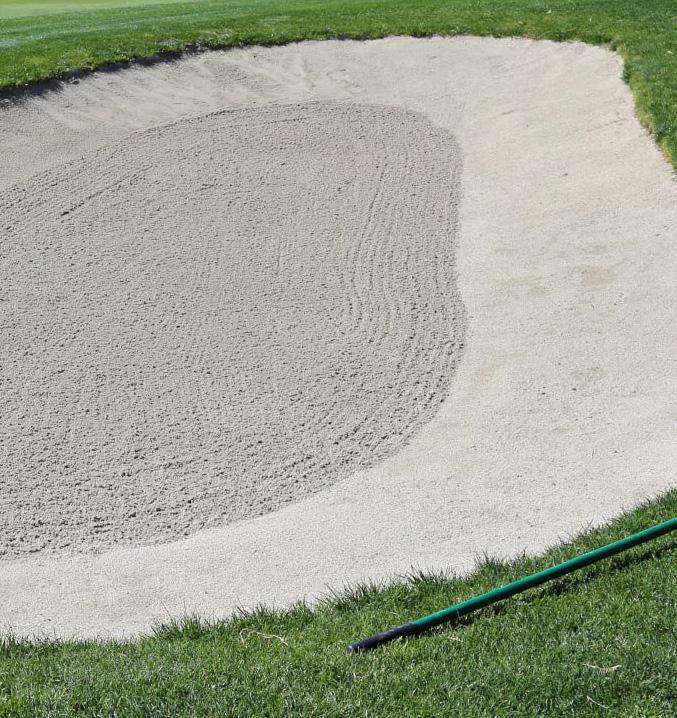

and you can’t always tell one sand from another just by looking at it.
Just like all bunker sands are not created equal, neither are all bunkers. Some bunkers take on surface water, while others are shaped to deflect it away from the sand. A bunker that water flows into when it’s raining will stay wetter longer and play firmer because more water reaches the sand and because the sand is more likely to become contaminated by dirt and debris that interfere with proper drainage. Bunker shape also matters – a flat-bottomed bunker will hold water differently than a bellied bunker, affecting how firm it is after rain.
Another bunker trait that affects playability is the presence of drainage. Without subsurface drainage, water will sit on the floor of the bunker until it naturally absorbs into the soil, evaporates, or is pumped out by the maintenance team. The longer a bunker stays saturated, the firmer it will play. One final construction feature that impacts bunker conditions is the presence or absence of a liner. Some liners are designed to aid drainage while others may cause the sand to hold moisture.
Some golf courses prefer a very intense approach to bunker management while others choose to focus more of their resources elsewhere. Bunkers that are raked daily will be less firm than those raked a few times per week, but different bunkers are often maintained at different intensities on the same course. For example, some courses will fully rake greenside bunkers daily and only touch-up disturbed areas of the fairway bunkers. A fairway bunker
Click Here for more from the USGA Green Section Record ‒including the latest articles and videos on sustainable management practices that produce better playing conditions for better golf.
that hasn’t been fully raked in a few days will often play firmer than a greenside bunker on the same hole.
There are also variations in raking methods that can impact how the sand plays. A bunker that is hand-raked could be “fluffier” than one raked with a machine. The added weight of the machine will compress sand, especially when it’s wet or damp, making for a firmer surface. Irrigation coverage also plays a role. It is unavoidable that some bunkers will get water from the sprinklers, keeping that sand firmer –especially if the course waters frequently.
One of the biggest factors in sand variability is the amount of play bunkers receive. The sand in bunkers that see a lot of action gets raked and shifted around by golfers more often. This can cause the sand to play softer. Bunkers that don’t get much play are usually firmer, especially if the maintenance team rakes them less frequently.
Bunker sand variability isn’t just something we see during a weekend round on our favorite course, it is also a common concern in championship golf. When I’m working at a USGA championship, we often take steps to improve sand consistency throughout the course, and this is at venues that already invest lots of resources into bunker maintenance. Despite our best efforts, we still hear comments about one bunker playing differently than another or the sand at this course playing differently than one down the road. That is simply the nature and challenge of bunkers, you never quite know what you’re going to get.
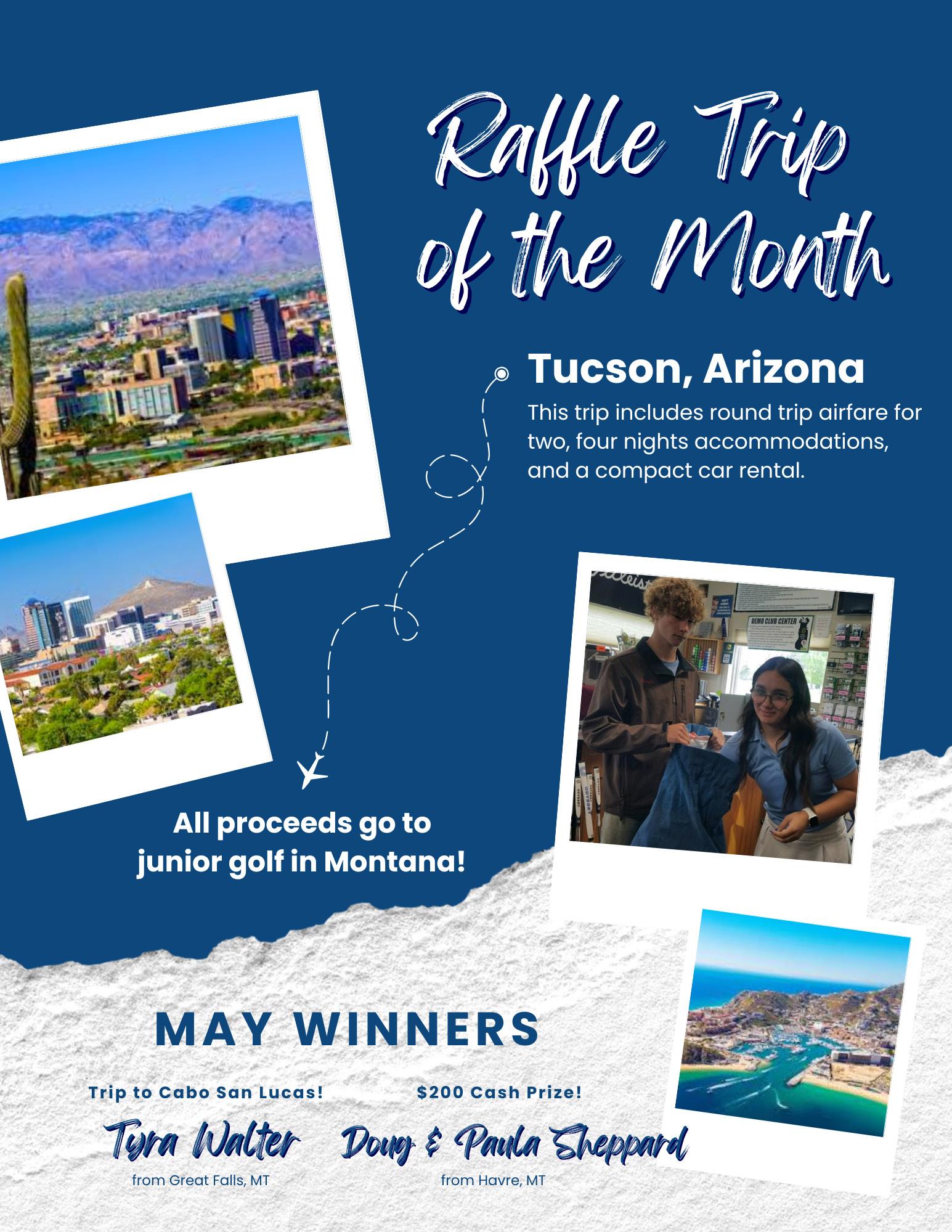



The Rocky Mountain women’s golf team concluded another fantastic season at the NAIA National Championships in Silvis, Illinois. Held May 14-17 at TPC Deere Run, the Battlin’ Bears competed against 24 other top teams in the country. There were four rounds overall with a cut after two rounds, in which the field was reduced to the top fifteen teams and the top six individuals not on one of the advancing teams.

Coming into the tournament ranked 22nd nationally, RMC got as high as eleventh place at one point after particularly strong first round performances from Valentina Zuleta and Isabella Downing. They couldn’t quite stay within the top fifteen during round two however, ultimately finishing in 20th place at +77.
Despite not quite making the cut as a team, Valentina Zuleta managed to snag one of the individual qualifying spots and played two more rounds of impressive golf. Coming into the final two rounds in a tie for 12th place, Zuleta showed why she’s one of the top NAIA golfers in the country notching
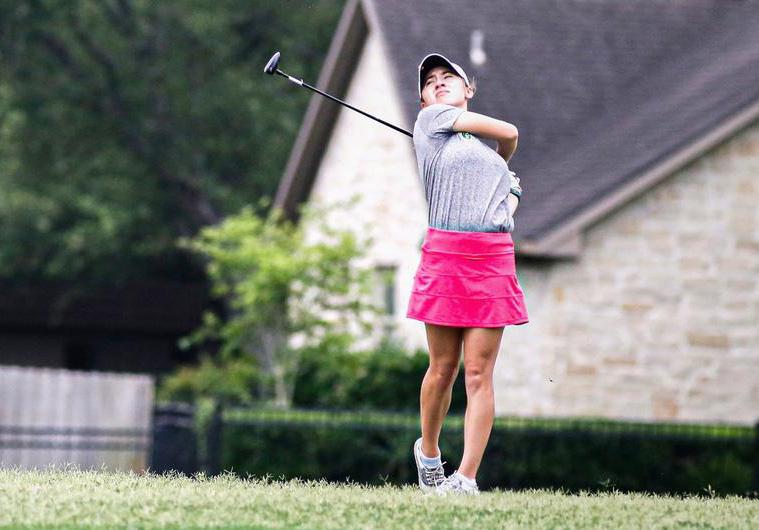 Valentina Zuleta tied for sixth place at +12 over four rounds of individual play at the NAIA Championships in May. Brandon Stinson
Valentina Zuleta tied for sixth place at +12 over four rounds of individual play at the NAIA Championships in May. Brandon Stinson
seven birdies and vaulting up the leaderboard where she ended up finishing in a tie for sixth place at +12 over the four rounds. Her 47 pars over the course of the tournament were also second most in the field.
Keiser University swept both the team and individual events. They finished +42 as a team, and individually it was Hoi Ki Lau that took home the title with a four-round score of +1.
The Battlin’ Bears women’s golf team has been on quite the run the last few years with many Frontier Conference titles and personal accolades, and now back-to-back seasons finishing in the top 20 at the National Championships. With the entire roster set to return next year, Rocky Mountain College golf fans will have a lot more to look forward to.
For full results, CLICK HERE.


NAIA Championships ‒ Women's Individual TPC at Deere Run Silvis, Ill. May 14-17, 2024


